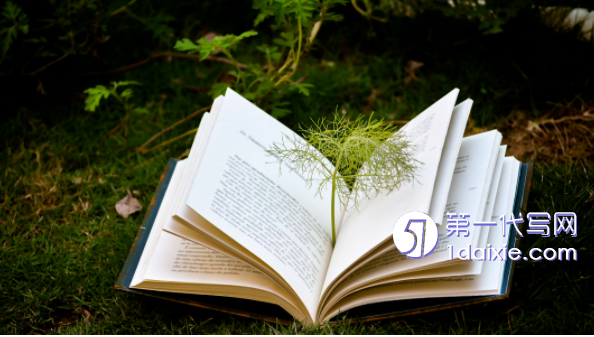本文是一篇英语论文,笔者认为劳森的诗歌既充满着对劳动人民的同情,又洋溢着爱国主义激情,真实地描绘了19世纪末20世纪初澳大利亚的社会现实,反映了澳大利亚的民族精神和当时人民大众的普遍愿望,对建构澳大利亚民族文学产生了有益的影响。
Chapter One Nationality and Australian Bush Literature
1.1 Nation and Nationality

In modern society, one of the main ways of identity is the concept of nationality. The word “nation” comes from the ancient French word “nacion”, meaning “birth” and “birthplace”. And “nacion” comes from Latin “natio” and “nationis”, which also have the meaning of “birth”. Around the 13th century, the word “nation” has been widely used, mainly referring to the concept of “ethnic group”. This “ethnic group” is not a group organization related to politics, but a natural group, which mainly depends on blood and land to maintain. In the 17th century, with the rise of the Enlightenment, the concept of “monarchy granted by the people” gradually took root. When “nation” refers to “all citizens of a country”, it began to synonym with “country”. In this sense, “nation” is different from “race”. It is a social unity formed by long-term historical development and is formed due to the differences in economic life, language, living habits or historical development of various ethnic groups or tribes in different regions. Generally speaking, the development from tribe to nation and country is the basic principle of Marxism on the initial formation of nation in history. From a worldwide perspective, the nation has gone through three stages of development: ancient nation, capitalist nation and socialist nation. The ancient nation refers to the nation that existed in various social development stages before capitalism, including the nation in the primitive society, the nation in the slave society, and the nation in the feudal society, and the bourgeoisie. In order to develop capitalism and unify the national market, they gradually broke the feudal separatist situation and established a unified nation-state, and the nation in these countries developed into a modern nation.
1.2 Australian Bush Writing Tradition
As a nation is the composition of imaginations, its existence must depend on some kind of fictional cultural mode. In this process, imaginative literature plays an important role. Literature makes the social life of a nation objective and promotes the standardization of national language. At the same time, nationality is also closely related to literature, not only with its content, but also with its form. In Australian nationalist movement, Australia’s nationality is embodied by bush novels and bush ballads, which are inseparable from Australia’s bush writing tradition.
The English word “bush” is derived from the Danish word “bosch”, which originally means “forest”, and is used by Australians to describe the vast areas within the Australian continent that are covered by virgin vegetation. For Australia, however, the bush is not just a natural landscape, “it also represents a brave, resilient, unrestrained and hard-working human spirit that is rural Australia, far from the city and close to nature” (Zhang “Bush Images of Lawson’s Short Stories” 64).
Since the implementation of the exile system in 1788, more than 160,000 prisoners have been exiled from Britain to Australia in decades. Most of them are criminal prisoners, some are political prisoners, radical reform activists and trade unionists. These prisoners had to do heavy physical work in the jungle of Australia. They cut trees, build roads, build houses, and reclaim land to seek the basic materials for survival on the deserted land.
Chapter Two National Feelings in Regional Writing
2.1 Focus on Bush Reality
An important vehicle for the expression of Lawson’s poetic nationality is the regional writing with the bush as a major component, and the national emotions embedded in it. The importance of the bush to Australia cannot be overstated, as it is the home of many Australians. The Australian bush is both real and unreal. Real in that it grows, dies, rots, burns and grows back into the bush in a variety of unmistakable ways; real also in that it is a harbour of life. Unreal, in that the life it blesses is the soul of the Australian spirit. In many ways, it is the source of this nation’s own understanding.
For Lawson, the bush is not only the place where he grew up, but also his spiritual home and soul residence, and the main source of inspiration for his literary work. Focusing on the bush reality and trying to show the world the real bush environment and bush life is his main way of expressing his feelings of home and country.
However, the Australian bush is not the paradise that Europeans see it as, rather it is extremely inhospitable and gruesome. In January 1788, when Arthur Philip (1738-1814), Australia’s first Governor-General, arrived at Botany Bay in New South Wales at the head of the First Fleet with aspirations for the “New World”, they were greeted by a vast inland wilderness of uncultivated bushland, unbearably hot weather and frequent droughts. This dauntingly harsh natural environment was a source of considerable disappointment and sadness for visitors, whether they were senior British officials or convicted exiles.
2.2 Contradictory Bush Attitudes
Describing Australian bush life and shaping various bushmen are important contents of Lawson’s poems. But Lawson’s attitude towards the bush is contradictory. On the one hand, Lawson’s poetry is a blunt reflection of the desolation of the bush, with its barren land, harsh climate and the hardships and monotony of bush life. On the other hand, he praises bushmen and bush life, often celebrating the optimism and strength of bushmen and the freedom and simplicity of bush life. In short, Lawson loves and hates Australian bush.
This ambivalent bush feeling is reflected in his poetry. Lawson went on a nine-month bush trip to the northern bush town of Bourke in New South Wales in 1892. Bourke’s surroundings left a very bad impression on Lawson. The town may have had some charming features, but Lawson arrived in the midst of a severe drought and the landscape was therefore miserable. He was greeted by dusty skies, withered woods and dazzling iron skins. Even so, Lawson was not at all unfamiliar with this environment, for it was the Australian bush with which he was familiar. At Bourke, Lawson met many honest and gregarious shearers. Even when the shouting came, they often drank together, had fun and lived a life of freedom and indulgence. As he writes in his poem “Bourke”, he admired the optimism and strength of these workers.
Chapter Three National Images in Bush Writing ............................. 29
3.1 Industrious and Hard Bushmen ................................ 30
3.2 Lonely but Tough Bushmen .............................. 33
3.3 Marginalized Urban Poor .................................. 36
Chapter Four National Spirit in Bush Fighting and “Mateship” ........................... 39
4.1 The Spirit of Bush Fighting .................................... 40
4.2 Mateship of Mutual Help ................................ 44
CONCLUSION ............................... 50
Chapter Four National Spirit in Bush Fighting and “Mateship”
4.1 The Spirit of Bush Fighting

For today’s Australians, the bush may be considered a place of openness, inspiration and imagination. But for the early Australian bushmen, the bush was a hostile, barren and horrific place. Australia’s indigenous people have lived in this environment for thousands of years, long before the first British colonists and exiles arrived on the continent. In the forests of eucalyptus trees, these bushmen, who relied on the weather, were constantly “fighting against the hot, dry, arid, snake-infested bush environment” and “the social exploitation and oppression inflicted on bushmen” (Zhang “Lawson, the bush and realism” 340). In this process, the bush spirit of resilience and resistance and the “mateship” of solidarity and friendship, which are unique to Australians, have gradually developed. They first sprouted among the Australian Aborigines and the British colonists, exiles and their descendants continued and developed it in the process of constantly adapting to the bush life. The unimaginable experience of the early Australian bushmen in the bush has made their hardships, their resilience in the face of bush adversity and the extent of their efforts to survive the bush a source of pride and heritage for the Australian nation today. Thanks to the fearlessness of the early bushmen, the bushmen’s unyielding attitude to any problem has given birth to the positive and optimistic character of the Australian nation. Combined with the promotion of the “Gold Rush” and nationalism in the second half of the 19th century, they finally became the unique spiritual temperament of the Australian nation. In his works, Lawson also celebrates and praises the bush spirit and “mateship” that has become the national character of Australia, and has even been deified as an Australian national attribute (Hou and Shi 125).
CONCLUSION
In the 1880s, Australia basically completed the transition from an immigrant society to its own national society. It is no longer just a place of exile in Britain, but the real hometown of native-born Australians. A nation with its own unique traditions, customs, culture and habits was born. For the Australians at this time, they need to build their own national identity to get rid of the British colonial rule in spirit and culture. Therefore, the Australian literary world began to nationalize literature in the 1980s and lasted more than 60 years until the end of the 1950s. During this period, Henry Lawson responded to the nationalist movement in Australia, describing the social reality of Australia in the form of poetry and in the native language of Australia, shaping a typical image of bushmen, eulogizing the national spirit represented by mateship, strengthening the national identity of the Australian people, and promoting the formation and development of Australia as an independent nation-state.
All in all, as a nationalist poet, the artistic character of Lawson’s poetry is clear. His poems are works of genius in both content and form and are gems of Australian literature. In terms of content, his poems are highly realistic. Whether they are slightly sentimental bush poems or passionate political poems, they have a strong contemporary flavor and reflect the feelings and spirit of the Australian nation. In terms of form, his poetry is natural and simple, often using the language of everyday life, with vivid imagery and sincere emotion. As a result, most of his poems are highly compelling and easily resonate with readers, making them popular with the Australian public.
reference(omitted)
